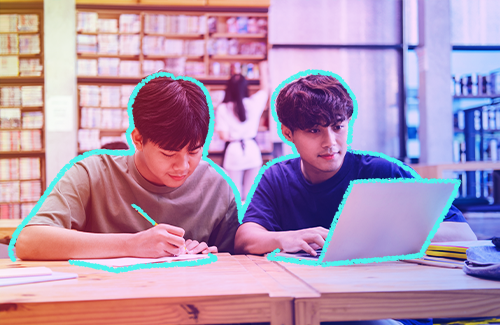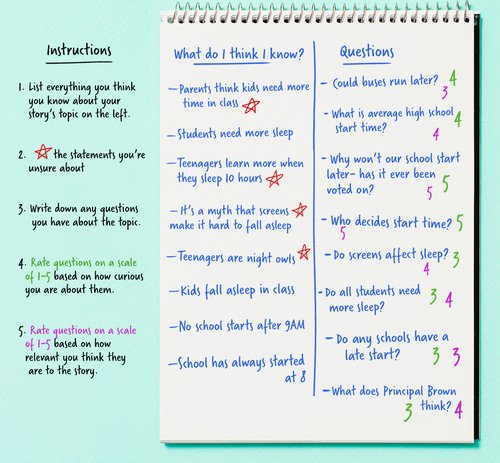Students will identify what they know and don’t know about their story’s topic. Once students know what they don’t know, they will use curiosity to guide research that will result in better developed stories.

Good journalism starts with curiosity, a desire to learn more about the world and to ask questions. A successful news story not only educates its audience, but also the producers, reporters, and journalists who have made the piece, which is why student journalism is a powerful way to learn.
It’s important to recognize that no matter how much you know, there is ALWAYS more to learn. In fact, the more you learn about something, the more questions you may have. Cultivating curiosity about the world, other people, and our society leads to better understanding of complex issues.
People are attracted to information that helps them make good decisions. If you like music, you find musician interviews relevant. If you’re looking for a job, the business news is relevant. We need to depend on relevant information that helps us make decisions.
Something that is known or proved to be true.
Something that is accepted as true or as certain to happen, without proof.
An investigation into and study of sources in order to establish facts and reach new conclusions.
A source is an individual, company, document or more that can provide information to fuel a new story. In order for a story to be considered verified and to maintain a reputation as a news outlet, it is important to have a credible source.
The process of verifying the accuracy of a piece of information.
A desire to learn and know about something or anything.
Students leverage technology to take an active role in choosing, achieving and demonstrating competency in their learning goals, informed by the learning sciences. (ISTE)
Students critically curate a variety of resources using digital tools to construct knowledge, produce creative artifacts and make meaningful learning experiences for themselves and others. (ISTE)
Journalism
Media Literacy
Digital Literacy/Citizenship
Lessons
Beginner
Intermediate
Advanced
White board, chalkboard or other visual board
Internet
Notebook
50 Minutes
